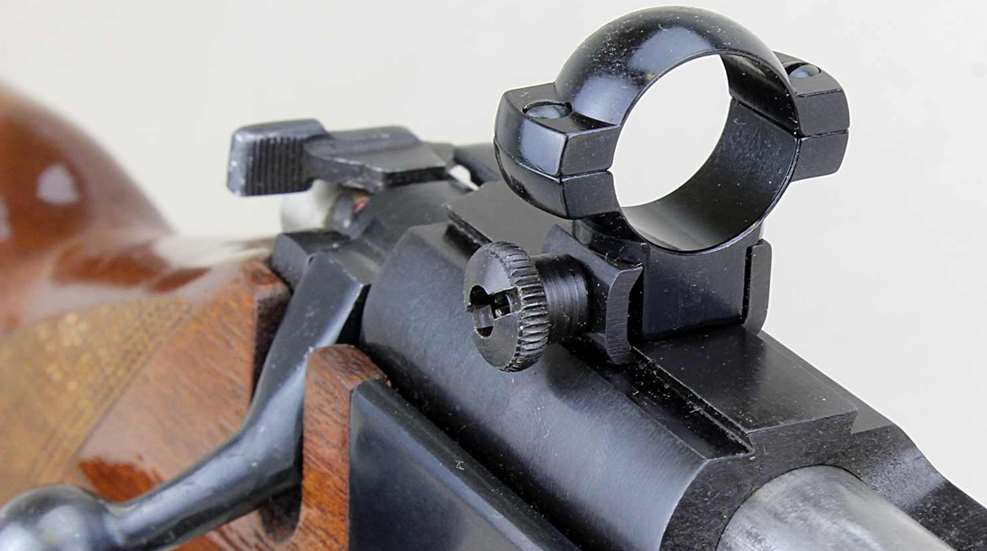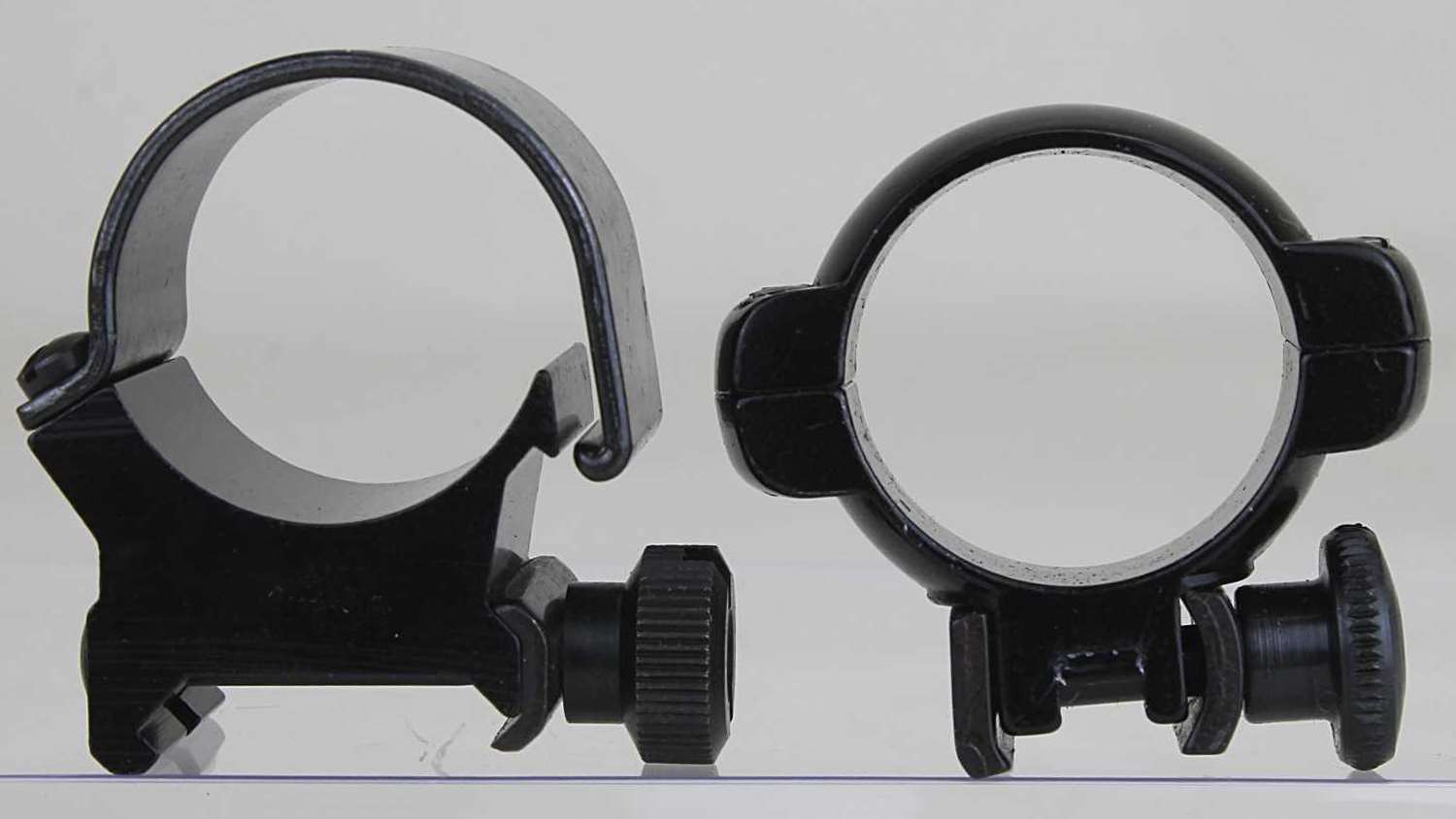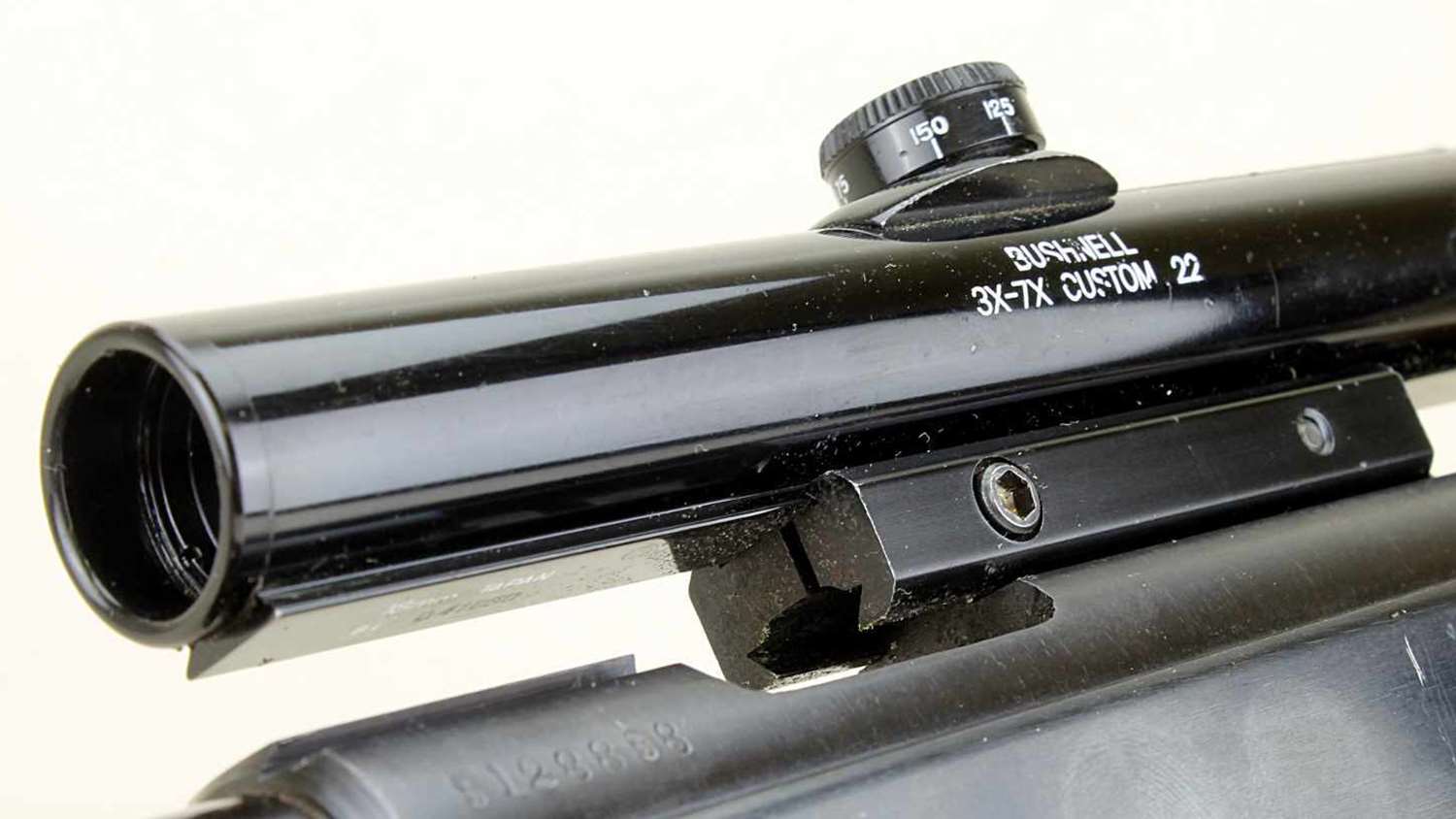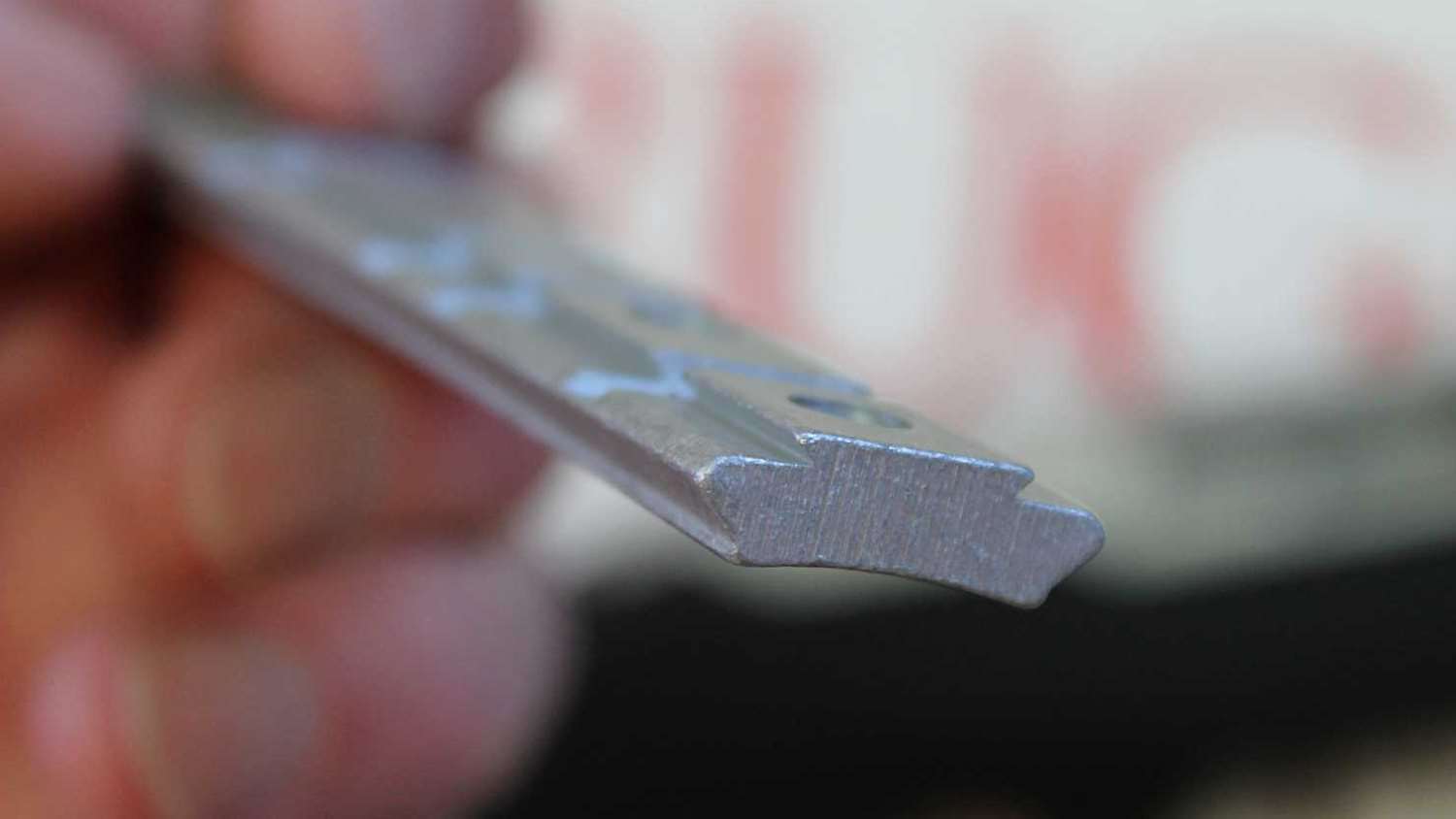
Say, “tip-off rings” in casual conversation, and more than one shooter will pause and ask what you mean. Though once more common, tip-offs have not disappeared from game fields or from competition; few know their origin, yet there are still some riflemen among us who remember when tip-offs and grooved receivers were new.

Made in America
How long has the claw style or tip-off ring for grooved rimfire rifle receivers been around? Certainly, it doesn’t predate grooved receivers themselves, which were not in the fields prior to WWII―at least, I find no reference to them before that war, nor have I ever seen a pre-WWII .22 rifle sporting tip-off ring grooves. And it’s a pretty good bet that, unlike the chicken-or-egg conundrum, grooved receivers and tip-off rings are inarguably concurrent.
Though others might have dabbled earlier, it appears that we can credit introduction of tip-off rings and grooved receivers to American gun maker O. F. Mossberg & Sons, Inc. In the 1955 American Rifleman, Technical Advisor Julian S. Hatcher reported he saw the concept demonstrated at the Mossberg factory in 1946 by company Executive Vice President Walter Pierson.
“He showed us his Model 151M automatic .22 on which he had started, in 1945, to groove the receiver for easier mounting of the scope sight,” Hatcher wrote. “At the same time he told us he was planning to bring out the Model 152 Mossberg rifle with the same receiver grooving. That was done in 1946. Then in 1947 Mossberg grooved the receiver of the Model 142, and in 1949 all Mossberg rifles were made with grooves on top for the Mossberg 4M4 scope.

“In recalling this to me recently, Walter said, ‘You can see, therefore, that we were quite a bit ahead of anyone else in the development of the grooved receiver.’ The idea soon caught on. Besides all models of Mossberg, many [other manufacturers’] .22 rifles are being grooved …”
There you have it; unless someone discovers information more definitive, tip-off rings for the masses apparently hit the range and fields in 1946 with the Mossberg Model 152. The advantage to the tip-off system is in its name―loosening two screws permits easy removal of the rings and scope assembly by tipping it to one side to free the rings’ claws from the receiver grooves. The system simplifies scope mounting by eliminating the need for separate ring mounts, as well as precluding the need to drill and tap the receiver. Most of today’s various scope mounting systems also permit easy-on, easy-off of the scope, but in the 1940s there were still many different systems that were not as amenable, so Mossberg’s idea was a bit revolutionary at the time.
Adapting
Since it’s a much simpler matter to drill and tap screw holes into a receiver than it is to mill grooves down its length, for those desiring tip-off mounting to their .22s lacking the grooves, manufacturers soon introduced ⅜-inch dovetail rails that could be attached to the receiver with screws. We still see this today: buy a new Ruger 10/22, for example, and in the box you’ll find a scope adapter rail that accepts Weaver style or tip-off rings; the receiver is already drilled and tapped for the adapter rail.
The downside to such rails is that they negate half the advantage of tip-off rings in the first place, which is not only ease of mounting but also quick-detaching to use the iron sights. Dovetail rails mounted on top of the receiver a la the Ruger 10/22 block the view of the barrel mounted iron sights, and removing the rail requires removing all the screws that mount the rail to the gun. While not necessarily laborious, it is also not something you’ll accomplish in the midst of a squirrel hunt in the field should your scope fail or you need iron sights for any other reason.
Pesky metrics
We consider the ⅜-inch wide tip-off groove to be standard width today. Having mounted plenty of tip-offs to grooved receivers, however, I’ve found that not all such rings fit perfectly to such receivers. While due to some differences in tolerances between manufacturers, we can also blame European rings wandering across the Atlantic to land unrecognized in our spare parts drawers. Converted to metric, ⅜ inch is 9.5mm; European setups may have rings of 11mm, 12mm and larger, and it’s likely that more than one rifleman has been frustrated by trying to fit a European square peg into an Imperial round hole. Too-wide rings have no practical solution for mounting to ⅜-inch grooved receivers.
Good tip-off rings resemble Weaver style rings, wherein you align one immovable claw into a groove and secure the other claw, a clamp, in the other groove with a screw that draws the clamp into position. Other types lack the clamp on one side and instead have two fixed claws; tightening a screw forces the claws to compress once positioned in the grooves. These are necessarily plastic, plasticized or alloy jobs that, when mounted, are in a constant state of straining against a screw with some force in attempting to spread back to their naturally open position. While this may be of no real import, it does create a situation of inherent eventual loosening or failure that is perhaps more theoretical than imminent. Some have a claw width slightly less than ⅜-inch wide; these can be slid onto the grooves from back or front and coaxed into position with a plastic mallet and wooden dowel.
Such cheap rings perhaps contribute to sometimes giving tip-off mounting a bad rap, and probably accounts for why we see few tip-off mounts in competition. In a world of better choices, steel rings are the way to go for mounting a scope to any rifle.
Recoil shy
The tip-off type mounting as it appears on rimfire rifles is not suitable for most centerfire rifles for an obvious reason: recoil. The lateral tension alone of the tip-off ring claws is typically not great enough to reliably prevent movement under repeated recoil heavier than that experienced with .22 (and now .17) rimfires. On all systems intended for centerfire rifles―Weaver, Ruger, Sako, etc.―there is some element that provides transverse support to prevent rings from moving forward or backward in their mounts under recoil. Tip-off systems lack this element because, Smallbore competitors’ disagreements aside, it isn’t needed with the .22 rimfire’s mild recoil. Smallbore competitors eschew the claw mount because ring-and-base mounting is decidedly more robust and gives the impression that it will not budge a single micron under recoil or handling (and because Smallbore rifles today typically lack grooved receivers). True or not, we can’t fault the desire for utmost confidence in our equipment, and every advantage or perceived advantage is desirable when trying to place all shots into a single hole. That said, some shooters of rimfire competitions such as Silhouette and Rimfire Sporter, as well as small game hunters, find tip-off mounting works well enough for them.

Tip-off rings and grooved receivers date from the days when scopes weren’t as reliable or inexpensive as they are now. We still see .22s with grooved receivers leaving factories today, but drilling and tapping receivers for other mounting options is more common. Without the impetus of ready reversion to iron sights in case of scope failure―or quick removal of an expensive scope before letting Junior take the rifle out after cottontails―the tip-off system has lost much of its desirability. But its simplicity and the ubiquity of grooved receiver .22s still in shooters’ racks means we’ll continue to use tip-offs long after the last rifleman who remembers the new grooved-receiver Mossberg Model 152 has left the range.

































